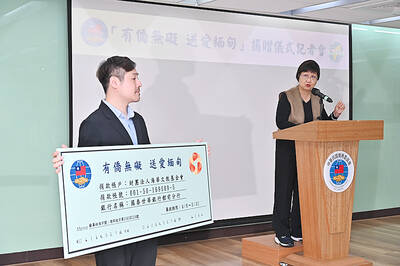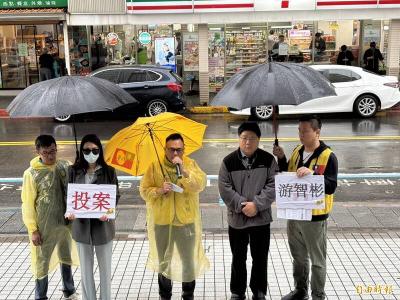The navy yesterday unveiled two refurbished minesweepers acquired from the US last year during a demonstration in waters off Greater Kaohsiung simulating a submarine intrusion.
A Lafayette-class frigate with media onboard, accompanied by two Chengkung-class frigates, a German-made minesweeper and two Osprey-class mine hunters headed into the Taiwan Strait to seek out an intruder submarine.
The mine hunters — MHC 1310 and 1311 — were obtained in August.

Photo: Reuters
Six Kuang Hua VI fast-attack missile boats, an S-2T Turbo Tracker anti-submarine aircraft and an S-70C helicopter, which dropped a sonobuoy to locate the enemy submarine, were also involved in the drill.
A navy Hai Lung submarine surfaced after the S-70 dropped a Mk46 torpedo.
It was the first time that the Osprey mine hunters had been on public display.
A number of vessels anchored at Tsuoying Naval Base, including some that participated in the exercise, showed that progress is being made in a NT$12 billion (US$406 million) program launched in May 2011 to outfit the Chengkung frigates, as well as the domestically made Ching Chiang-class patrol boats, with Hsiung Feng III supersonic anti-ship cruise missiles.
Four HF-3 launchers were seen on the two Chengkung-class frigates, PFG 1105 and PFG 1109, that took part in the exercise. In all, 120 HF-3s are to be added to the navy’s arsenal under the program.
Taiwan’s submarine chasing capabilities will be substantially enhanced after it receives 12 refurbished US P-3C Orion maritime aircraft to replace the aging S-2Ts, which were acquired in the 1980s.
Navy officials said the exercise highlighted the nation’s military preparedness and combat readiness ahead of the Lunar New Year.
A second day of exercises is planned for today at army and air force bases in Hualien.

DEFENSE: The National Security Bureau promised to expand communication and intelligence cooperation with global partners and enhance its strategic analytical skills China has not only increased military exercises and “gray zone” tactics against Taiwan this year, but also continues to recruit military personnel for espionage, the National Security Bureau (NSB) said yesterday in a report to the Legislative Yuan. The bureau submitted the report ahead of NSB Director-General Tsai Ming-yen’s (蔡明彥) appearance before the Foreign and National Defense Committee today. Last year, the Chinese People’s Liberation Army (PLA) conducted “Joint Sword-2024A and B” military exercises targeting Taiwan and carried out 40 combat readiness patrols, the bureau said. In addition, Chinese military aircraft entered Taiwan’s airspace 3,070 times last year, up about

A magnitude 4.3 earthquake struck eastern Taiwan's Hualien County at 8:31am today, according to the Central Weather Administration (CWA). The epicenter of the temblor was located in Hualien County, about 70.3 kilometers south southwest of Hualien County Hall, at a depth of 23.2km, according to the administration. There were no immediate reports of damage resulting from the quake. The earthquake's intensity, which gauges the actual effect of a temblor, was highest in Taitung County, where it measured 3 on Taiwan's 7-tier intensity scale. The quake also measured an intensity of 2 in Hualien and Nantou counties, the CWA said.

The Overseas Community Affairs Council (OCAC) yesterday announced a fundraising campaign to support survivors of the magnitude 7.7 earthquake that struck Myanmar on March 28, with two prayer events scheduled in Taipei and Taichung later this week. “While initial rescue operations have concluded [in Myanmar], many survivors are now facing increasingly difficult living conditions,” OCAC Minister Hsu Chia-ching (徐佳青) told a news conference in Taipei. The fundraising campaign, which runs through May 31, is focused on supporting the reconstruction of damaged overseas compatriot schools, assisting students from Myanmar in Taiwan, and providing essential items, such as drinking water, food and medical supplies,

New Party Deputy Secretary-General You Chih-pin (游智彬) this morning went to the National Immigration Agency (NIA) to “turn himself in” after being notified that he had failed to provide proof of having renounced his Chinese household registration. He was one of more than 10,000 naturalized Taiwanese citizens from China who were informed by the NIA that their Taiwanese citizenship might be revoked if they fail to provide the proof in three months, people familiar with the matter said. You said he has proof that he had renounced his Chinese household registration and demanded the NIA provide proof that he still had Chinese